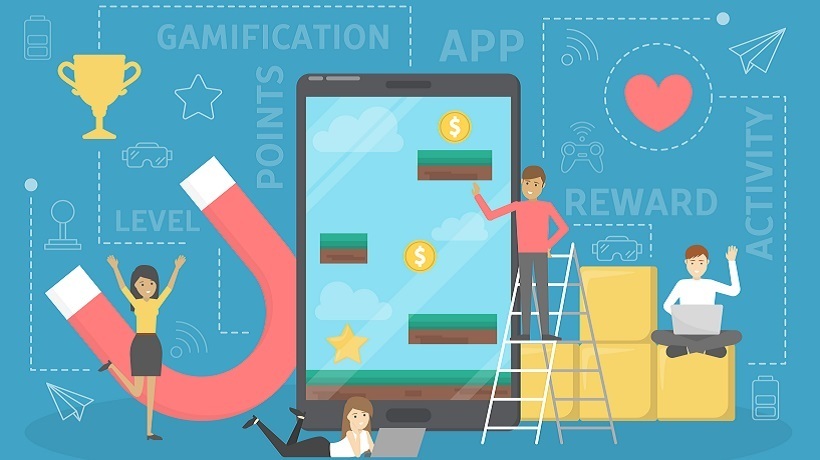How Can You Implement Gamification Effectively Within Your eLearning Program?
Gamification is a popular term at the moment and it can be seen in numerous and diverse applications. The simplest definition of gamification is that its approach is to add typical elements of game playing (point scoring, competition with others, rules of play) to other areas of activity. It can often be seen in online marketing techniques and approaches, as it encourages engagement with a particular product or service.
Gamification has marked benefits as it allows a business to meet its staff in a setting that they understand and with clear actionable objectives. In the field of elearning gamification becomes increasingly useful and it aids learning and information retention.
However gamification isn’t always implemented well and in fact, often doesn’t meet the desired objectives. Technology researchers at Gartner released a report that predicted that 80% of gamified applications will fail to meet their objectives by 2014. This is due to poor design, including meaningless points and badges, and has led to many gamified applications being considered as failures.
The question then is how to implement gamification effectively and to fulfill your desired objectives. Let’s consider the effective ways to adopt this practice and galvanise your training efforts.
Global firms will adopt gamified elearning in 2014
The current climate for gamification suggests that nearly three-quarters (70%) of large global companies will have at least one gamified application in place on its LMS by 2014.
There are a number of benefits to adding gaming elements to your training materials within the work environment including developing a particular skill, improving employee’s health, and increasing knowledge retention.
Gamification, when integrated correctly, can make a training campaign much more engaging and it’s an increasingly popular way of promoting a business and its philosophy, and it’s also being used to help staff build their own personal brands.
Interestingly, it seems that although gamification adds a fun element to training it should also include a competitive bent. The competitive nature of many gamified training sessions means that employees want to do the best that they can and win out. It’s also likely to increase the chances of employees participating in the new training schemes.
It’s a good idea however to mix up the competitive elements to your learning platform. Ensure that there are competitions between staff members, but also foster a team spirit and compete against external challenges. Humans like to better themselves and feel that they are progressing towards something.
Use the idea of levelling up and promote new knowledge as a competitive pursuit. Gamification can increase motivation, global accessibility, and increased levels of engagement. It’s also cost effective and much cheaper than traditional face-to-face teaching sessions.
Tom Richardson, the founder of Deloitte’s Leadership Academy, said that the cost of online training is as low as $5 per employee per hour. This is in marked contrast to face-to-face instruction which can cost as much as $50 per person.
Gamification can improve employee motivation and it does it all much cheaper than traditional options. Let’s look at some ways that your business could effectively utilise gamification within its elearning efforts.
Determine the business problems you want to solve
The process of gamification is only effective when it encourages specific behaviours to achieve certain goals. Without careful planning and consideration the gamification approach won’t be a success.
Identify the areas that you want to see business results in and create incentives to help your employees reach those points. Devise a plan and develop actionable items that will help you and your employees achieve the collective goal. It’s not (all) about making training fun, it’s about making it more effective.
Don’t gamify the wrong process
A flawed process will always be flawed, so tacking gamification onto it won’t make it successful. In fact incorrectly implementing gamification can be just as bad as ignoring goals or not even conducting training at all.
If you’ve got a successful process or learning platform game mechanics can make it more fun and encourage employees to succeed. So ensure that your current process isn’t flawed, broken or inefficient and then you’ll find that your new gamified learning platform is effective and utilised correctly.
Be realistic with your expectations
Game behaviours can influence your employees immediately but that doesn’t always translate into sustainable behaviour. The problem can be that employees become immune to gamification practices and they lose their effectiveness. The old idiom familiarity breeds contempt rings true. Make sure that your gamification process is varied and changes to reflect the current state of your employees and their behavioural patterns.
There are two motivation types to consider:
- Extrinsic Motivation
This is when a participant performs an action for an external reward - Intrinsic Motivation
A participant performs an action for a personal reward
The idea when it comes to gamification learning practices is that by the time the extrinsic motivation has faded (or is forgotten) your employees will see the value of the new behaviour and continue acting on that due to their own intrinsic motivation.
Gamification is a process that can have marked benefits for a business and its employees. Add actionable items to your elearning platforms; encourage competition and reward positive behavioural traits. You’ll notice a much happier, more contented, and better-educated workforce.









